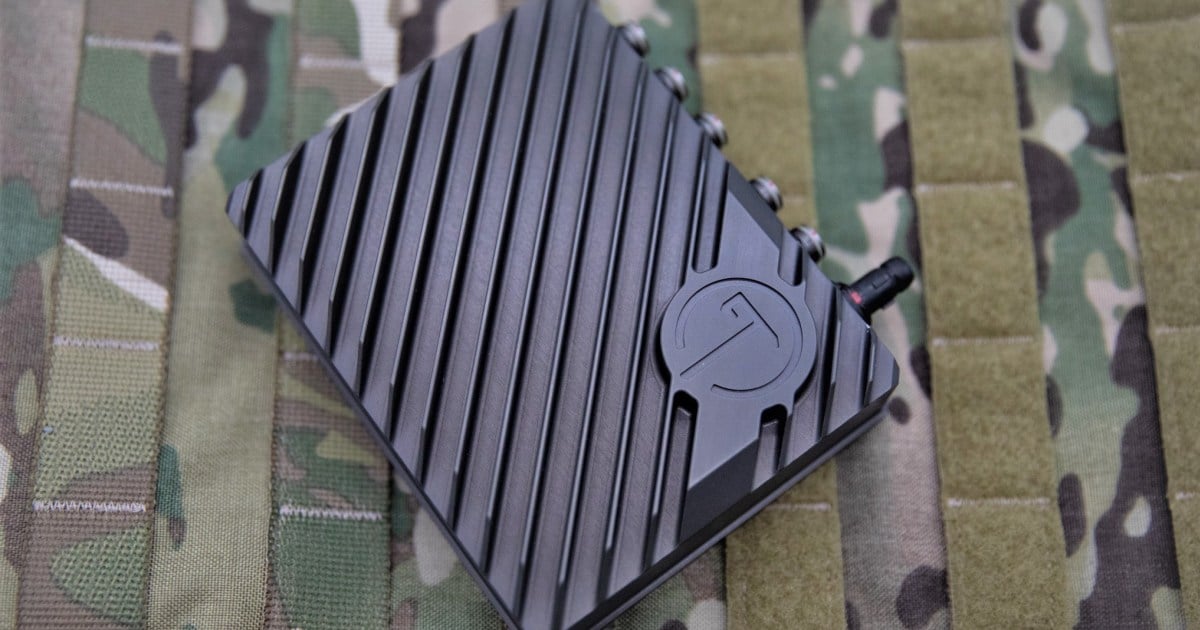
Jim Douglas sees the rise of autonomous systems, on the journey from automated to highly automated to fully autonomous, as one of the main drivers of technology change over the next twenty years. To get there, however, Douglas says solving for the economics will be key, as will the quality and reliability of edge solutions, where the company is focused.
“The potential benefits of autonomous systems are many, but the consequences of failure aren’t an option when it comes to critical infrastructure, including our energy grids, transportation systems, and autonomous vehicles,” Douglas said, from Embedded World this week where Wind River announced a new platform for edge devices “designed to enable the modernization of legacy systems in aerospace, automotive, defense, industrial, and medical.”
The Helix Virtualization Platform combines the company’s commercial real-time operating system (RTOS) and embedded Linux distribution into an edge compute platform and allows other operating systems to run unmodified within the same framework, providing a software development environment across the Wind River portfolio. It makes more intelligent real-time automation at the edge economically feasible.
Douglas described a highly collaborative R&D process with their impressive customer base. The company developed the platform in concert with Wind River “lighthouse customers” that have been leading in the development of intelligent systems, from modernizing aerospace platforms to transforming industrial infrastructure and advancing autonomous driving, and have hundreds of millions of dollars, if not billions, invested in legacy systems, which Douglas says can be extended without creating technical debt, given the flexible architecture of the Helix Platform.
The new Helix Platform addresses a wide range of critical infrastructure development needs, which Douglas outlines as the product’s primary use cases, from highly-dynamic environments without certification requirements, to highly-regulated static applications such as in avionics and industrial, as well as systems requiring the mixing of safety-certified applications with non-certified ones, such as in automotive.
Helix has been designed to support the mix, including driving workloads onto a single box through workload consolidation to improve the economics, but not at the expense of reliability and safety. Douglas refers to this as an “asset bridge” saying “developers can run legacy code on the OS of their choice, for example a control system running with our VxWorks RTOS orchestrated with another application running on Linux; Helix provides that asset bridge which future proofs the solution, managing complexity and risk in an economically reasonable way.”
In its press release, the company says the platform will maximize ROI and total cost of ownership (TCO) by increasing asset value and reducing operational costs with the following features:
- Robust time and space partitioning leveraging Wind River’s industry-leading RTOS and virtualization technology, safety certified functionality, and commercial off-the-shelf (COTS) certification evidence.
- Multi-operating system capabilities enable the consolidation of mixed-criticality workloads, side by side, on a single edge compute platform.
- Consolidation of multiple applications into one platform allows common edge devices to serve diverse system architecture needs, such as low latency control functions on an RTOS alongside Linux-based applications and frameworks, such as machine learning.
“The industry is moving in a direction of heterogeneous systems where the development of many critical infrastructure systems requires both an open source Linux and a proven commercial RTOS, and Helix Platform offers the best of both worlds with VxWorks® and Wind River Linux integrated in a single solution, from a single supplier,” Douglas said.
“Embedded system developers will need to continually adapt to modern software and cloud deployment practices and keep their systems running, while improving and future-proofing them,” Douglas said. “This includes taking full advantage of innovation in various forms of artificial intelligence running on edge devices, which add complexity and uncertainty, even as they make full autonomy possible.”
Developers need to know they can meet current project and compliance requirements, and plan their roadmaps, without having to make disruptive changes in the future if new hardware, software, frameworks or cloud services are needed, Douglas explained.
“The Helix Platform means legacy software can remain unchanged while running alongside new applications, and it provides all the benefits of a consistent, scalable and agile platform across a wide range of edge devices,” Douglas said. “Our customers and partners value a platform that supports heterogeneous systems, especially as we move closer to the edge, where compute requirements and economics are substantially different in the world of AI.” “Developers want to go down a path where they can move up levels of abstraction,” Douglas said. “They want to be more productive, with better tools, which we’ve seen play out in the world of traditional software and cloud development. These developers can now create microservices, for example, and leverage containers and Kubernetes. We’re making this all possible with Helix Platform. Drawing from our rich proven technology heritage and unmatched safety expertise, Helix Platform is a critical building block for how we will continue to accelerate the evolution from automated devices towards more intelligent and even autonomous systems.”
The offering comprises VxWorks along with its virtualization technology, integrated with Wind River Linux and Wind River Simics® for system simulation. It meets the stringent safety-certification requirements of the DO-178C, IEC 61508, and ISO 26262 safety standards. Helix Platform is operating system-agnostic, providing the capability to run any unmodified guest operating system, such as Microsoft® Windows®, Roll Your Own, and others. It also provides multi-core hardware support and availability on the latest Arm®, Intel®, NXP, and Xilinx silicon platforms that enable both 32- and 64-bit guest operating systems.
“Today’s IoT system development requires more sophisticated and streamlined software development offerings. Wind River Helix Virtualization Platform targets this need, providing a flexible platform capable of addressing the complex and heterogeneous compute requirements of tomorrow’s devices,” said Chris Rommel, Executive Vice President, VDC Research.
“Autonomy is transforming the industry and developers in markets such as automotive and industrial need innovative and safe solutions to overcome the challenges presented by the real-time and mixed criticality capabilities required for these applications. Arm’s industry leading functional safety IP portfolio in concert with Wind River software, provides developers with solutions that safely scale across multiple markets and certification standards,” said Neil Stroud, director, technology strategy, Automotive and IoT Line of Business, Arm.
NXP shares Wind River’s vision of converged workloads at the edge. Virtualization enables simultaneous operation of real-time and high-level operating systems, and NXP has provided multiple generations of processors with hardware virtualization built on Power Architecture® and Arm® architecture. NXP is pleased to help enable the Wind River Helix Virtualization Platform to run on Layerscape® processors, said Noy Kucuk, Vice President of Product Management, Digital Networking, NXP.
“With the Xilinx Zynq UltraScale+ MPSoC being the first silicon to run the new platform, Wind River and Xilinx can now offer advanced solutions to the aerospace, automotive, and industrial markets. We will continue to work closely with Wind River in defining compute architectures for additional markets – especially those where system flexibility, high performance and safety, alongside broad application support are needed,” said Simon George, Director of System Software and SoC Solution Marketing, Xilinx.
Edited by
Ken Briodagh





